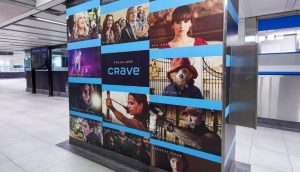As transparency and brand risk concerns continue to dog the programmatic landscape, the experts behind the ads are shifting their focus to ensure their buys are going to high-quality media, according to a new survey.
The survey of both brand- and agency-side digital media experts was conducted by Ipsos on behalf of Integral Ad Science to understand perceptions of programmatic. It also describes how digital media experts using supply path optimization to increase the effectiveness and efficiency of programmatic campaigns across formats.
Although programmatic has many benefits, transparency and media quality issues persist for media experts, resulting in a fundamental shift towards quality path optimization. Instead of focusing on low-cost ad inventory, marketers are using supply path optimization strategies to seek high quality media. In order to maximize efficiency, the majority (60%) of ad buyers are either implementing or planning to implement a supply path optimization strategy in the next 12 months and 36% say supply path efficiency will be a top priority in the next 12 months.
Advertisers (54%) say that maximizing audience reach and scale is the primary benefit of programmatic advertising, but that lack of transparency in programmatic (42%) is a top challenge, along with increased ad fraud (44%) and brand risk (46%).
Media quality issues are the top challenges in programmatic advertising for marketers. Almost half (46%) of ad buyers say increased brand risk is the primary challenge with programmatic advertising; 44% say increased ad fraud is the main challenge; 42% cite lack of transparency as a major challenge.
Despite these challenges, ad buyers are still allocating the majority of their media budgets to programmatic advertising. In fact, 80% of respondents stated that roughly one-third or more of their advertising budgets are transacted programmatically – which, perhaps, makes these need to ensure they are getting quality impressions from that investment all the more important.
Video ads are the most popular format, particularly when it comes to mobile and social environments: social video (71%), mobile web video (61%) and mobile app video (60%) were the top formats respondents said they were investing in, while emerging formats including CTV (38%) and digital audio (37%) show there’s still room for growth.
Brands and their agencies are largely aligned on the benefits of programmatic advertising, though agencies see things slightly more optimistically: 57% of respondents from agencies believe programmatic maximizes audience reach and scale, versus 50% of those from brands. Similar, slight gaps exist on whether programmatic increases campaign effectiveness (52% of agencies versus 50% of brands), time efficiency (53% of agencies versus 48% of brands) and cost efficiency (53% of agencies versus 48% of brands).
One area where they differ in on ad fraud, where 53% of agency respondents are concerned about ad fraud, compared to 36% of brands.
And where there is a much bigger gap is on who should take responsibility for monitoring media quality. Nearly six in 10 brand respondents see themselves as responsible for media quality monitoring, with only one-fifth seeing it as the role of an agency partner. By contrast, nearly four in 10 agencies say media quality is theirs to monitor, while only one-third believe it is the role of the brand.
























